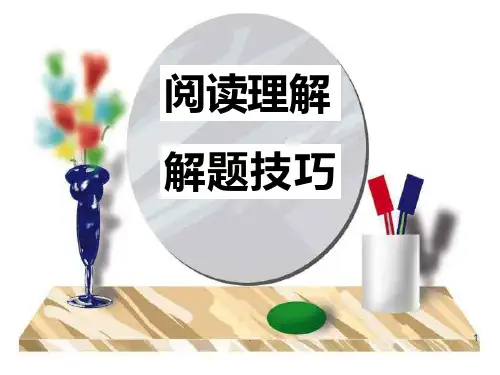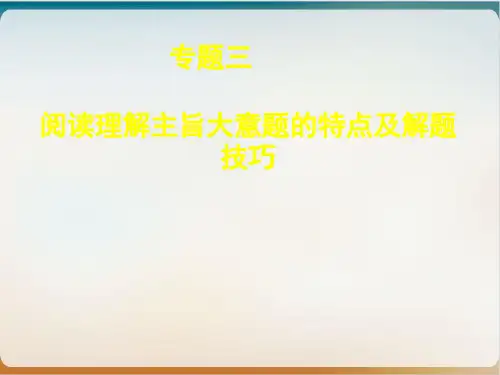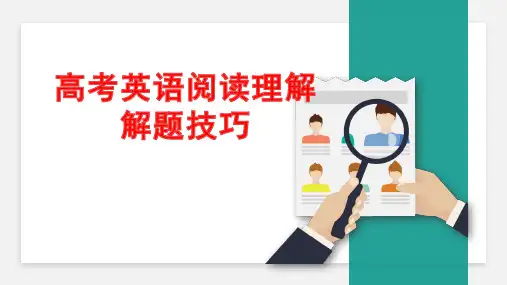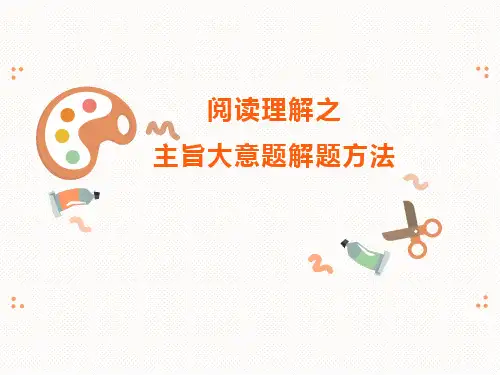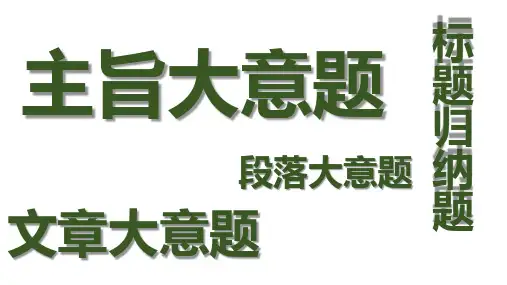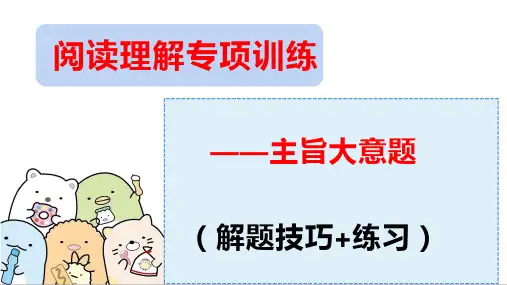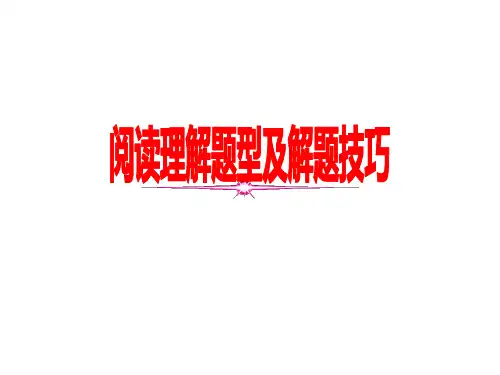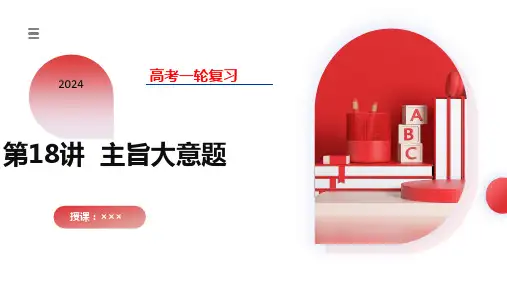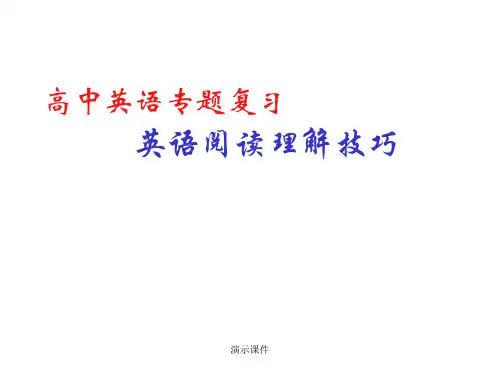- 1、下载文档前请自行甄别文档内容的完整性,平台不提供额外的编辑、内容补充、找答案等附加服务。
- 2、"仅部分预览"的文档,不可在线预览部分如存在完整性等问题,可反馈申请退款(可完整预览的文档不适用该条件!)。
- 3、如文档侵犯您的权益,请联系客服反馈,我们会尽快为您处理(人工客服工作时间:9:00-18:30)。
(1)主题句在段首 一个主题句常常是一个段落的开头,其后的
句子则是论证性细节。在论说文,科技文献和新 闻报道中多采用这种格式。
Sample 2
Some students prefer a strict teacher who tells them exactly what to do. Others prefer to be left to work on their own. Still others like a democratic discussion type of class. No one teaching method can be devised to satisfy all students at the same time.
忌: 范围太大, 过于笼统, 范围太小 (常用文中细节或某段段落大意
来混淆).
如何寻找主题句
Sample 1
People have different tastes in food. Some feel that they haven't eaten a meal unless they have had steak or other red meat. Some prefer chicken or fish and eat one or the other at every meal. Others prefer vegetables and fruits or grains and would enjoy a meal of spaghetti, eggplant, and fresh fruit. Others could live on what were called fast--foods: a hamburger or hot dog, French fries and a soft drink.
( 2 )主题句也会出现在段尾。作者先摆出事
实依据, 层层推理论证, 最后自然得出结论, 即段落的主题。本段的中心思想在结尾句得到 体现,它是此段内容的结论。
Sample 3
Nothing is as useful as a flashlight on a dark night if a tire goes flat. Few inventions are so helpful to a child who is afraid of the dark. In fact, the modern flashlight brings light to many dark situations. Finding something in the back of a closet is easy with a flashlight in hand . A camper also needs one after the light of the campfire has been out.
(3)在短文中间 当主题句被安排在段中间时, 通常前面只提出 问题, 文中的主题由随之陈述的细节或合乎逻 辑的引申在文中导出, 而后又作进一步的解释, 支撑或发展.
Sample 4 (无主题句)
Joshua Bingham studied 4 years at the University of Paris and decided to leave his graduation. He transferred to the University of Berlin and graduated with honors. Harvard Law School and, later, Boston College provided him with an excellent legal background. He is presently a corporation lawyer in Miami, Florida.
寻找主题句的方法
(二) 文中出现的连词(转折but/ however, 因果 so/ therefore,或一些常见但在文章中 间出现有一定目的的词(in fact, the study shows that…, for example, in short), 这 些词后面所阐述的往往就是主题句 。
寻找主题句的方法
(三)有的文章无明显主题句,主题句隐含在 段意之中,这就需要读者对每段文章的段 意进行归纳,在段落大意的基础上再进一 步加工概括了。 (四)首段出现疑问句时,对该问题的解答就是 文章主旨. (五)关注高频词 (常为名词)
第二步: 推敲选项, 排除干扰
推敲选项正误的5个小窍门: ⑴ 根据第一步寻找主题句,找出关键词,与四 个选项进行匹配,选出最合适恰当的答案 ⑵ 正确选项常含有概括性的词语 ⑶ 正确选项一般不含绝对意义的词 ⑷ 正确选项应能概括全文,内容全面,含义深 刻或说明道理 ⑸ 四个选项中,内容相近或完全相反的两个 选项中往往有一个是正确答案
第二步: 推敲选项, 排除干扰
干扰项的特点: ⑴概括范围太窄,常为文中具体信息或某个段 落大意 ⑵概括范围太宽,所表达内容常超出文章阐述 的内容 ⑶无关信息:即文中未提到或找不到语言依据 的信息,但看起来又是对的.
第二步: 推敲选项, 排除干扰
标题的特点: 简练, 全面, 范围合理, 常为名词.
Main Idea
பைடு நூலகம்阅读技巧
阅读中主旨大意题的题型分类
主旨题
标题类 文章主旨
段落主旨
第一步:识别文体,找主题句
新闻报道
导语提携全文
议论文
总--分--总
(论点-论据-结论)
说明文 记叙文
主题句
(首--中--尾)
记叙文六要素
寻找主题句的方法
(一) 记叙文: 文中一般没有明显的题句 夹叙夹议文: 主题句常在议论中 说明文: 一般在首段 议论文: 一般为总分总模式, 即主题句(作 者的观点) 常在首段或末段(作 者观点的重申)。当然,由于写 作需要,主题句偶尔也可在一段 文章中间。
What is the main idea of the passage?
